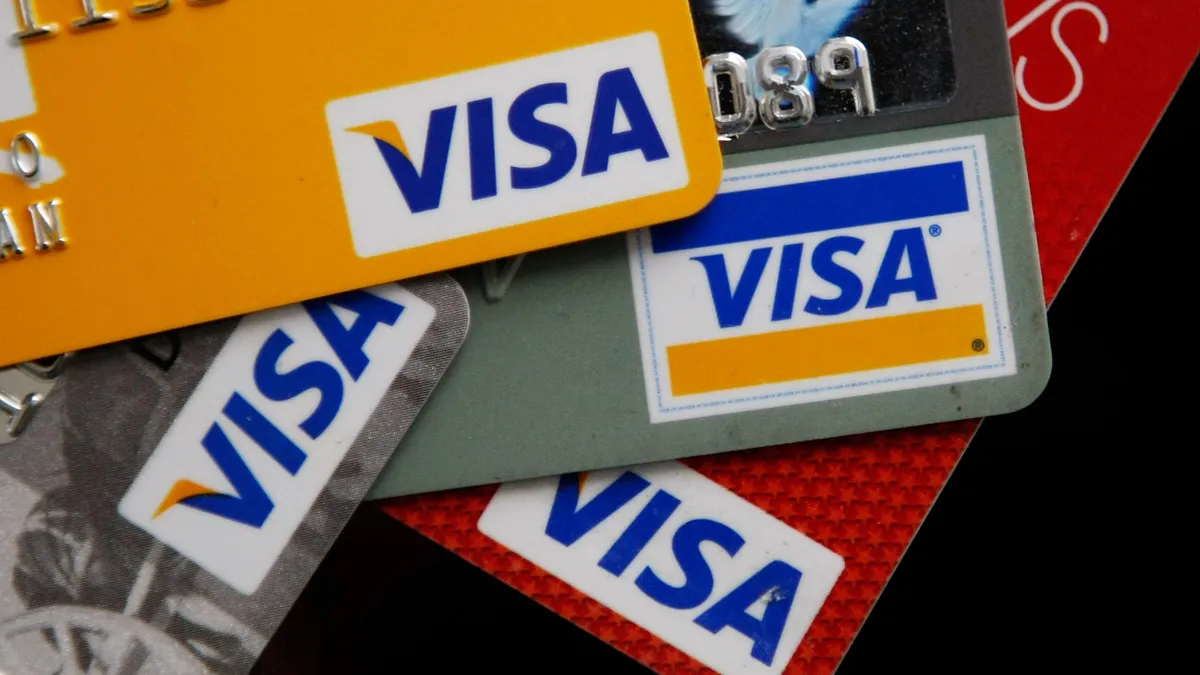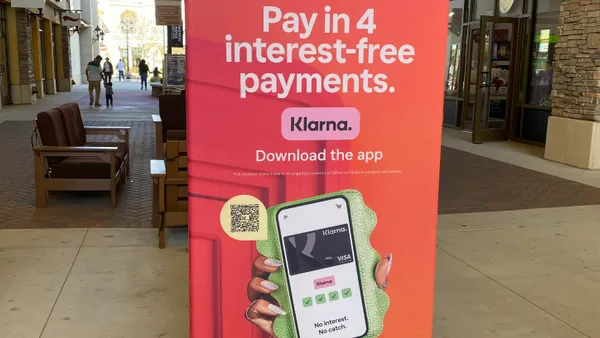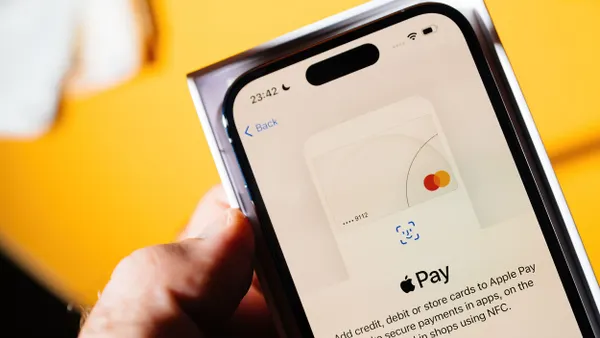Dive Brief:
- Visa, the biggest U.S. card network company, reported double-digital increases in both its net income and revenue for the fiscal third quarter on Tuesday, with CEO Al Kelly saying the company isn’t seeing any signs of a U.S. recession at this point.
- The company’s results for the quarter ending on June 30 were buoyed by a rise in cross-border travel spending, generally strong consumer spending for goods and services across socioeconomic segments and more demand for services like Visa Direct instant payments in markets outside the U.S.
- The card giant’s net income rose 32% to $3.4 billion on a 19% rise in revenue to $7.3 billion, according to a Tuesday press release from the San Francisco-based company.
Dive Insight:
In a webcast discussing the results on Tuesday, Kelly and Chief Financial Officer Vasant Prabhu reassured analysts that there is no threat at the moment to what has been robust demand for the company’s credit and debit card services, as the world’s economies recover from the COVID-19 pandemic that began in early 2020.
The U.S. economy has taken a turn for the worse this year with inflation rising to a 40-year high, fueled in part by higher gas prices spurred by Russia’s invasion of Ukraine in February. Those factors complicated the nascent recovery for many businesses from the impact of the deadly pandemic. Now, the Federal Reserve is roiling the situation by pushing up interest rates to hold back inflation.
The economic shifts have led to lots of a talk of a potential U.S. recession, often marked by two consecutive quarters in which the gross domestic product declines. GDP declined 1.6% for the first quarter and the verdict is out for the moment with respect to the second quarter. All of that has spurred a lot of recession chatter, with media reports on the issue climbing, the publication Axios reports.
But it hasn’t damped results at Visa. Increased spending for cross-border travel during the quarter topped Visa’s pre-pandemic 2019 levels for the first time, with pent-up outbound traffic from the U.S. lifting results. The jump in globe-trotting occurred despite still sluggish inbound U.S. travel and a slower recovery for Asia, specifically China, the executives said during the call.
“This looks pretty durable,” Prabhu said of the travel uptick. “We don’t think this ends anytime soon.”
With respect to general consumer spending, Kelly noted that overall demand remains high, despite a slowdown in small-ticket spending likely tied to less commuting to offices and buying for items like lunch-time meals. By the same token, affluent customers are showing a healthy appetite for travel and fine dining, he added.
While the company has been looking for signs of a downturn in spending by lower-income consumers, it hasn’t appeared in Visa’s numbers yet, Prabhu said.
In the meantime, the company is seeing a pick-up in sales of ancillary payments services such as its Visa Direct instant payments, which has experienced more demand in Latin America, and its tokenization services that allow for securing payments data.
“We’re being very vigilant in looking into the numbers and seeing if we see anything that requires us to be proactive,” Kelly said. Through July 21, consumer spending “has remained very resilient,” he added. “For how long that will be, it remains to be seen.”













